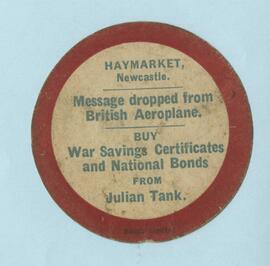US ARMY ORAL HISTORIES: World War Two
- MFF7
- Collection
- 1944-1945
Armed Forces Oral Histories; World War II Combat Interviews is a themed microfiche collection of 375 typescript combat interviews, together with narrative accounts and official supplementary materials including field orders, periodic and operations reports, statistical data, sketch maps and overlays, 22 May 1944-10 May 1945. Documents include accounts relating to US 1 Infantry Div during Operation NEPTUNE, the amphibious assault on France, 6 Jun 1944, the landing at Omaha Beach, Normandy, France, 6 Jun 1944, the Battle of Aachen, Germany 8 Oct-22 Oct 1944, the defensive in the Ardennes Forest, 16 Dec-31 Dec 1944, the drive to the Rhine and subsequent bridgehead established at the Ludendorff bridge, Remagen, Germany, 17-31 Mar 1945; US 2 Infantry Div during the Brest Campaign, France, 25 Aug-18 Sep 1944, and the drive from the Rhine river to Leipzig, Germany, 21 Mar-20 Apr 1945; US 3 Infantry Div during the invasion of Southern France, Aug 1944-Feb 1945; US 4 Infantry Div and the liberation of Luxembourg, 16 Dec-24 Dec 1944; US 5 Infantry Div during operations at Fort Driant, Belgium, and Metz, France, 9 Nov-24 Nov 1944; 8 Infantry Div operations during the reduction of the Crozon peninsula, France, 1 Sep-19 Sep 1944; 9 Infantry Div and the US aerial bombing of US troops during the Normandy breakout, 24-29 Jul 1944; intensive fighting experienced by 28 Infantry Div in during the Battle of Hurtgen Forest, 2-16 Nov 1944; US 35 Infantry Div winter fighting in the Ardennes Forest, 26 Dec 1944-23 Jan 1945; 36 Infantry Div during Operation DRAGOON, the Allied landings in Southern France, Aug 1944; 42 Infantry Div during the battles in the Saverne Gap, Alsace, France, 4 Jan-26 Jan 1945; 65 Infantry Div drive to Struth, Austria, 7 Apr-8 May 1945; 69 Infantry Div contact between US and Soviet forces on the banks of the Elbe River, 25-26 Apr 1945; 71 Infantry Div and the surrender of German Army South, 18 Apr-8 May 1945; 80 Infantry Div during the Moselle River crossing and subsequent fighting during the Lorraine Campaign from the Seille River to the Saar River, 12 Sep-5 Dec 1944; the establishment of an Allied defensive base at Ste Mere Eglise by 82 Airborne Div and its subsequent fighting during Operation MARKET GARDEN, the large-scale Allied parachute drop to seize the Nijmegen- Grosbeek high ground in the Netherlands, 6 Jun-26 Sep 1944; the capture of Hannover, Germany, during the Rhine-Ruhr-Elbe Operation by 84 Infantry Div, 1 Apr- 9 May 1945; 94 Infantry Div co-operation with Free French forces on the St Nazaire- Lorient Front, 8 Sep-30 Oct 1944; 101 Airborne Div combat operations near Carentan, Cotentin Peninsula, France, and ensuing problems due to the scattered parachute drop pattern, 6-10 Jun 1944; French 2 Armoured Div during the advance to liberate Paris, France, and Strasbourg, France, 6 Jun-28 Nov 1944; US 7 Corps during operations from the break-out at Normandy, France, to the liberation of German concentration camp at Nordhausen, Germany, Jul 1944-Apr 1945; US 7 Army invasion of Southern France, detailing the importance of intelligence furnished by the Maquis French resistance movement, 15 Aug 1944.


